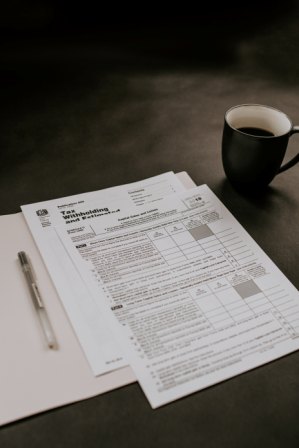The Internal Revenue Service (IRS) has created a new federal income-tax form specifically designed for senior taxpayers, age 65 and older, that should make filing a little easier this year, particularly those who don’t file electronically. Here’s what you should know.
Form 1040-SR

Created by the 2018 Bipartisan Budget Act, the new two-page simplified federal income tax form is called the 1040-SR. Similar in style to the old 1040-EZ form that the IRS discontinued last year, the new 1040-SR has larger print and better color contrast that makes it easier to read.
In addition, it also includes a chart to help older taxpayers calculate their standard deduction, which may help ensure that fewer seniors neglect to take the additional standard deduction that they are entitled to. For 2019, the additional deduction for those 65 or older or the blind is $1,300.
The 1040-SR form also has specific lines for retirement income streams such as Social Security benefits, IRA distributions, pensions and annuities, along with earned income from work wages and tips. And, it allows a child tax credit for seniors who are still taking care of a dependent child or grandchild.
You can also report capital gains and losses, as well as interest and dividends on this new form. Any of the tax schedules available to those using the standard form 1040 may also be used with the 1040-SR.
You should also know that the 1040-SR doesn’t put a limit on interest, dividends, or capital gains, nor does it cap overall income like the old 1040-EZ form did. But, if you have to itemize because of state and local taxes or charitable giving, then you will not be able to use the new Form 1040-SR.
Paper Filing Advantage
Seniors who use tax-preparation software to file their taxes will be able to generate a 1040-SR, but the new form will provide the most significant benefit to taxpayers who still fill out and file their returns on paper.
Last year, about 88 percent of the 153 million individual federal tax returns filed to the IRS were filed electronically. About 5 percent were prepared using tax software, then printed out and mailed to the agency, while about 7 percent were prepared on paper.
To use the new 1040-SR tax form for the 2019 filing year, taxpayers, including both spouses if filing jointly, must be at least age 65 before Jan. 1, 2020. You also don’t have to be retired to use the form – older workers can use it too. But early retirees (younger than 65) cannot use 1040-SR.
To see the 2019 draft version of the new 1040-SR form, go to IRS.gov/pub/irs-dft/f1040s–dft.pdf.
Tax Preparation Help
If you need help filing your tax returns this year, consider contacting the Tax Counseling for the Elderly (or TCE) program. Sponsored by the IRS, TEC provides free tax preparation and counseling to middle and low-income taxpayers, age 60 and older. Call 800-906-9887 or visit IRS.treasury.gov/freetaxprep to locate a service near you.
Also check with AARP, a participant in the TCE program that provides free tax preparation at more than 4,800 sites nationwide. To locate an AARP Tax-Aide site call 888-227-7669 or visit AARP.org/findtaxhelp. You don’t have to be an AARP member to use this service.
Jim Miller publishes the Savvy Senior, a nationally syndicated column that offers advice for Boomers and Seniors.
Related Articles & Free Subscription

Consider Some Year-end Investment Tax Moves
Invest in Your Family and Community







Comment here